
In celebrating the California dogface butterfly, Zerene eurydice, visitors at the Bohart Museum of Entomology open house learned about the biology and history of the insect, engaged in arts and crafts, and enjoyed two specially decorated sheet cakes, one featuring the male dogface butterfly and the other, the female.
The occasion: the 50th anniversary of the year that the California State Legislature designated the California dogface butterfly as the state insect. Most attending the open house have never seen the butterfly in the wild.
The dogface butterfly, found only in California, thrives at its major breeding ground, the Shutamul Bear River Preserve in Auburn, a private preserve maintained by the Placer Land Trust (PLT). It's there because its host plant, false indigo, Amorpha californica, is there--amid the steep canyons, wildflowers poison oak and other vegetation.
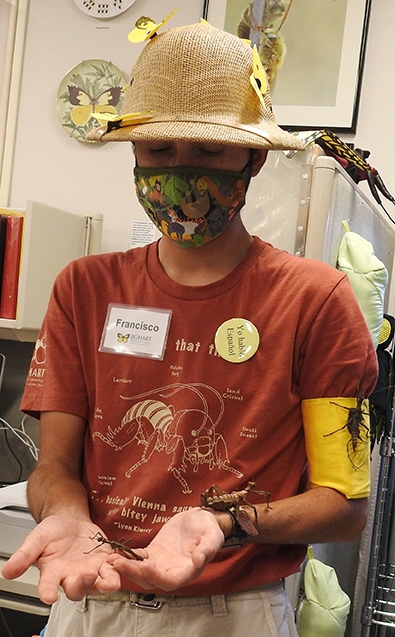
Kareofelas, who has reared multiple dogface butterflies from egg to caterpillar to chrysalis to adult, showed a PowerPoint of images he captured of the life cycle and discussed the history and biology of the butterfly. He serves as a volunteer docent for PLT.
Communications specialist Julia Boorinakis Harper Barbeau of Placer Land Trust narrated a video and staffed a table with fellow PLT'ers Carole Gan and CollinHobb. Among others participating was naturalist and PLT docent volunteer Deren Ross, credited with finding the first dogface butterfly at the Shutamul Bear River Preserve. (See PLT news story)
UC Davis students and Bohart volunteers Danielle Sion and Amberly Hackmann encouraged the guests to make yellow felt butterflies, ornaments for their shoes, hair, belt and wrists. Guests also crafted caterpillar puppets. A stick insect at the Bohart Museum petting zoo, took the opportunity to walk on one of the caterpillar puppets.
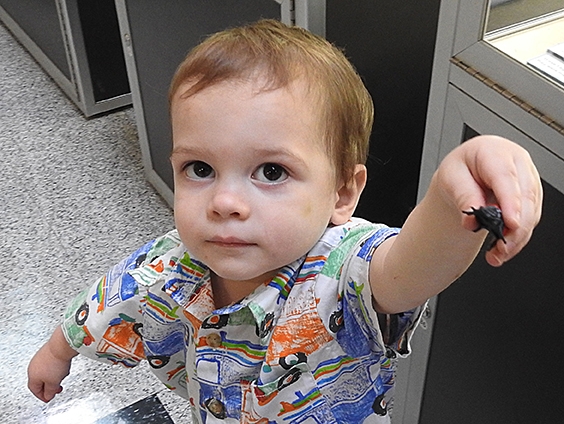
Entomologist Jeff Smith, curator of the Lepidoptera collection, showed specimens, including dogface butterfly, monarch, morpho and viceroy specimens, and answered questions.
Meanwhile, entomologist and Bohart lab assistant Brennen Dyer staffed the gift shop. A budding entomologist named Chip, 2, of Woodland, showed off his newly purchased bug habitat cage and some toy critters.
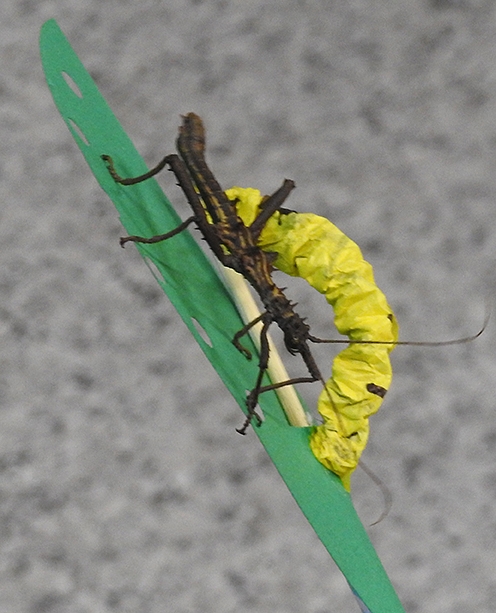
The Bohart Museum, directed by UC Davis distinguished professor Lynn Kimsey, houses a global collection of eight million insect specimens. It also maintains a live petting zoo and an insect-themed gift shop (including T-shirts, hoodies, books, jewelry, posters, collecting equipment).
The next Bohart Museum open house will be the annual Moth Night, held in observance of National Moth Week. The open house will be both indoor and outdoor from 8 p.m. to 11 p.m., Saturday, July 30. The event is free and family friendly, and visitors are encouraged to explore the world of moths in the Bohart's research collection and to see what lands on backlighting display: a hanging white sheet, illuminated by ultraviolet (UV) light and powered by a generator. The backlighting display will be a short, walking distance from the museum.
This summer the Bohart Museum is open to the public Monday through Thursday from 9 a.m. to noon and from 1 to 5 p.m., but groups must make reservations and all must follow the UC Davis visitor guidelines: https://campusready.ucdavis.edu/visitors?.
Attached Images:
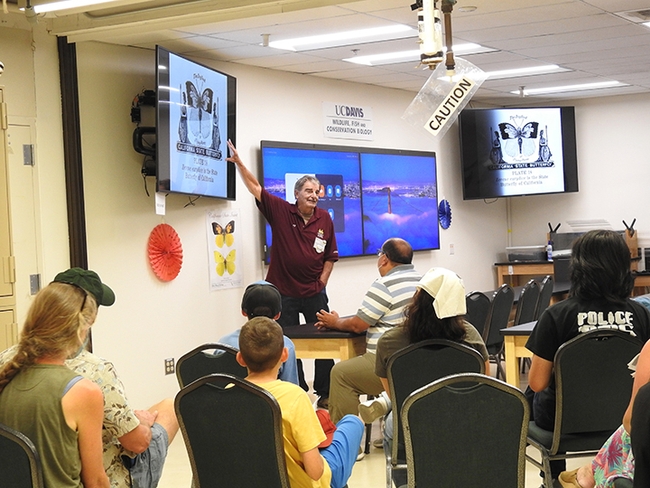
Bohart associate Greg Kareofelas talks about the history of the California dogface butterfly. (Photo by Kathy Keatley Garvey)
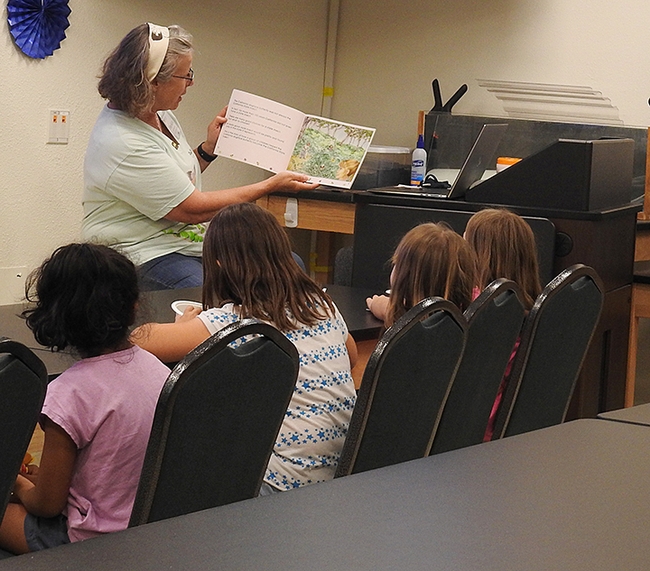
Professor Fran Keller of Folsom Lake College reads her children’s book, “The Story of the Dogface Butterfly,” available in the gift Shop. (Photo by Kathy Keatley Garvey)
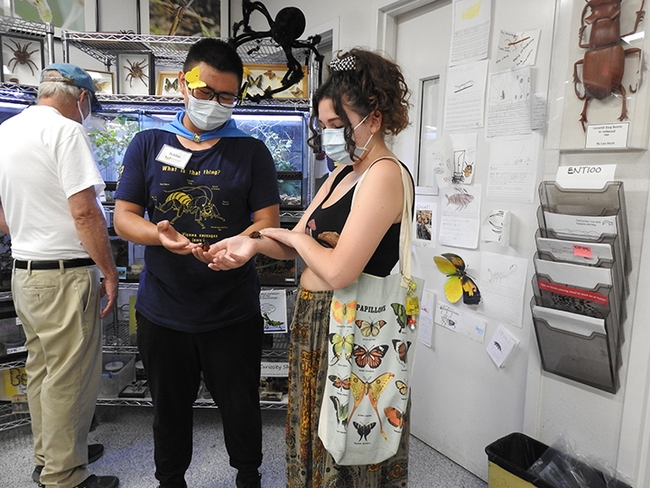
UC Davis students Kaitai Liu and Sol Wantz check out the Bohart’s live petting zoo, including Madagascar hissing cockroaches, and stick insects. Wantz is the incoming president of the UC Davis Entomology Club. (Photo by Kathy Keatley Garvey)
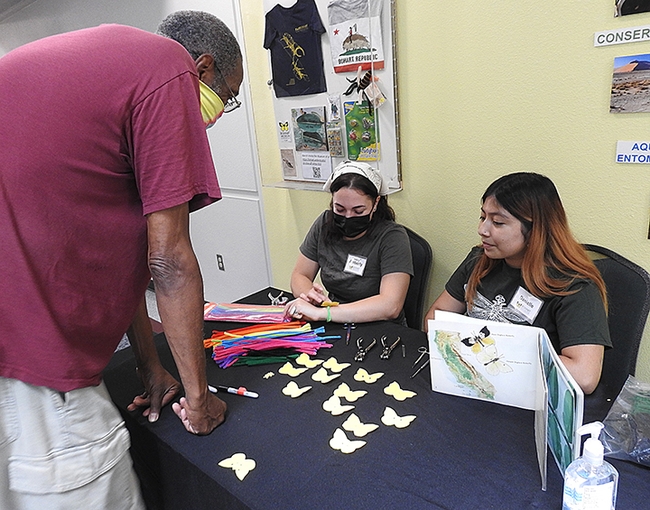
UC Davis students Danielle Sion and Amberly Hackmann staff the felt dogface butterfly table.(Photo by Kathy Keatley Garvey)
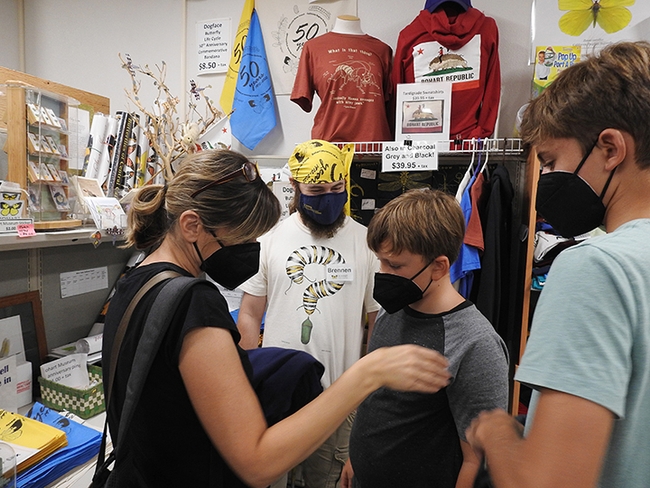
Bohart Museum lab assistant Brennen Dyer (in back, center) staffs the Bohart Museum gift shop. (Photo by Kathy Keatley Garvey)
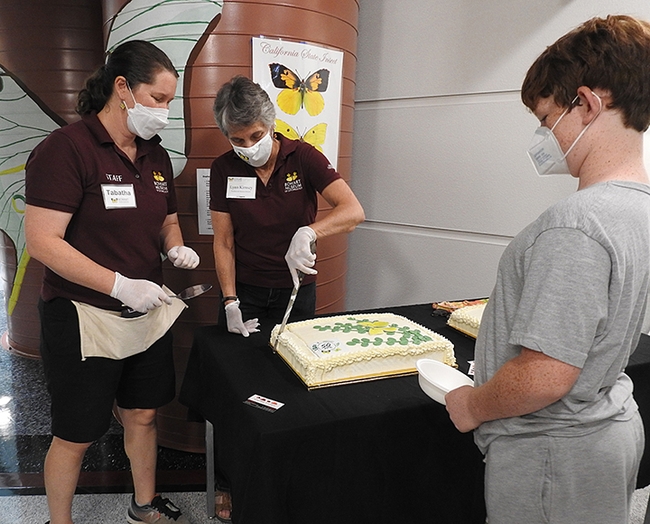
Lynn Kimsey (right) director of the Bohart Museum of Entomology and Tabatha Yang, education and outreach coordinator, cut one of the two specially made cakes. (Photo by Kathy Keatley Garvey)
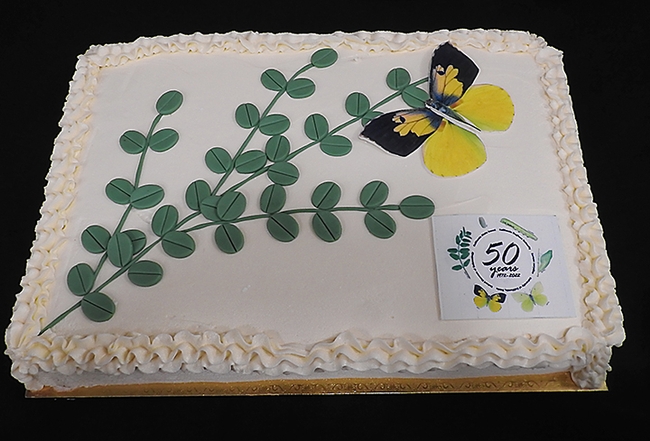
Guests enjoyed the specially made cakes featuring a male dogface butterfly (shown) and a female dogface butterfly. They were the work of Tiffany Warrick of CreaTions N' EvenTs, Sacramento. (Photo by Kathy Keatley Garvey)